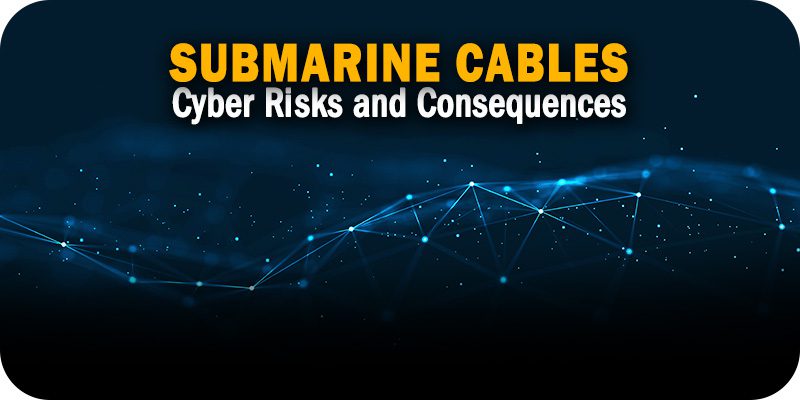Submarine Cables: Cyber Risks and Consequences


Solutions Review’s Expert Insights Series is a collection of contributed articles written by industry experts in enterprise software categories. Martin Lee of Talos dives deep into the cyber risks presented by submarine cables, and the consequences of ignoring them.
 Cybersecurity professionals protect the confidentiality, integrity, and availability of data and systems. Typically, cybersecurity teams tend to focus on the upper reaches of the technological stack. User error, software vulnerabilities, and misconfiguration combine to create a rich mix of risks and opportunities for mischief that the cybersecurity team must resolve.
Cybersecurity professionals protect the confidentiality, integrity, and availability of data and systems. Typically, cybersecurity teams tend to focus on the upper reaches of the technological stack. User error, software vulnerabilities, and misconfiguration combine to create a rich mix of risks and opportunities for mischief that the cybersecurity team must resolve.
It is easy to overlook the risks to which the lower levels of the technology stack are exposed. Infrastructure that functions reliably, such as submarine telecommunications cables, is often taken for granted. These cables are relatively few in number but carry vast amounts of internet and enterprise traffic, potentially from many different service providers. The disruption of the Nord Stream submarine gas pipeline in the Baltic Sea by an apparent act of sabotage highlights the risks to the undersea infrastructure that carries many international network communications.
At the best of times, the seabed can be a hostile environment. Fishing, errant anchors, geological activity, and the corrosive effects of seawater all act to ensure that the expected design life of an undersea cable is 25 years. Failure of submarine infrastructure is not unexpected. The loss of a single cable can be planned for. The architecture of the internet means that the packets of data carrying information can be switched and rerouted around areas of disruption. If redundant routes exist, network availability should not be interrupted despite the severing of a connection. However, as excess traffic is squeezed into the remaining connections and the contention ratio increases, the quality of connections may degrade.
Looking for MDR solutions? Check out our free Buyer’s Guide!
Submarine Cables: Cyber Risks and Consequences
For many applications, a fractional increase in latency or a possible decrease in the quality of applications such as video conferencing may not be noticeable. Nevertheless, organizations for whom low-latency communications are vital may suffer from interruptions to their required quality of service. Multiple subsea cables share relatively few sites suitable for siting landing points. Even after reaching land, many cables may share common infrastructure. This means that there are potential single points of failure, where a single incident can affect many different telecommunication cables.
The internet has weathered many occurrences of cable failures, including the loss of many cables in single incidents. Hence, although the exact effects of an incident are unpredictable, it is possible to anticipate some scenarios. Outages are likely to manifest as packet loss and/or an increase in latency. Some paths will be affected more than others depending on the location of the issue and service providers’ contingency plans. A major incident that causes one or more countries or service providers to be significantly impacted may result in connections being rerouted via very different geographic routes than usual.
Managers should reflect on their exposure and resiliency to network outages. A business-critical cloud service, or a service that has a significant cloud component, may become unavailable following a network outage. Alternatively, connections to a service may be rerouted through an unexpected jurisdiction. Tight integrations with suppliers and customers through just-in-time supply chains are also exposed to these same risks.
Identifying the services that are exposed to the risk of disruption due to submarine cable outages allows businesses to plan mitigations. Visibility of these connections is key. Domain names which suggest that a service is delivered from one country should not be taken at face value; the actual country of hosting may be radically different.
The traceroute tool combined with geolocation services allows teams to identify the paths taken by network connections. If the critical network paths used by your organization traverse seas or oceans, consider the effect of losing that network path. Would an increase in latency, reduction in bandwidth, or rerouting of connections pose a problem? If so, prepare suitable mitigations in advance so that they are ready.
Organizations that require high availability of international or intercontinental network connections should review their exposure to the risk of submarine cable failure. The nature of this risk will depend on how services are currently delivered. Network providers may be able to guarantee levels of service through their own internal mitigations. Alternatively, organizations may need to source their own separate network connections with distinct peering relationships or even consider satellite connections to assure vital services.
As business systems become more tightly integrated via computer networking, the effect of a major outage to the infrastructure that supports these networks becomes greater. Understanding the nature of these connections at risk and preparing the response if something does go wrong ensures that consequences are minimized. Ignoring the risk or hoping that the effects won’t be too bad is only inviting disaster if connections go down.
Widget not in any sidebars























